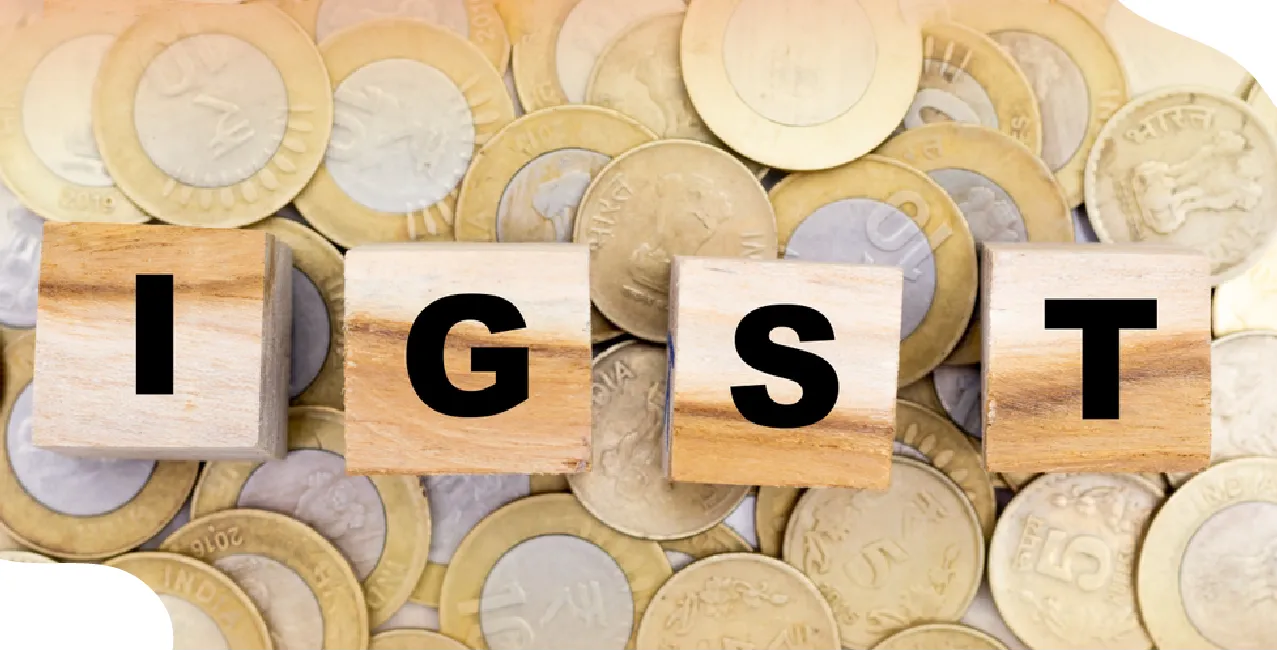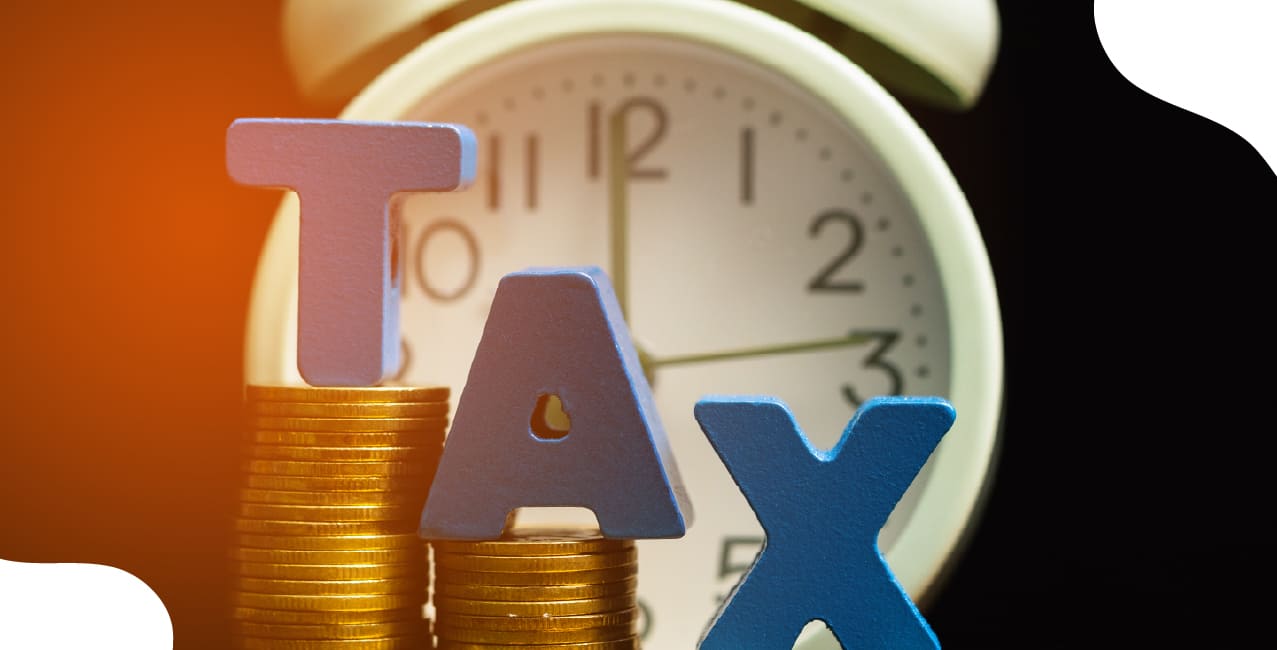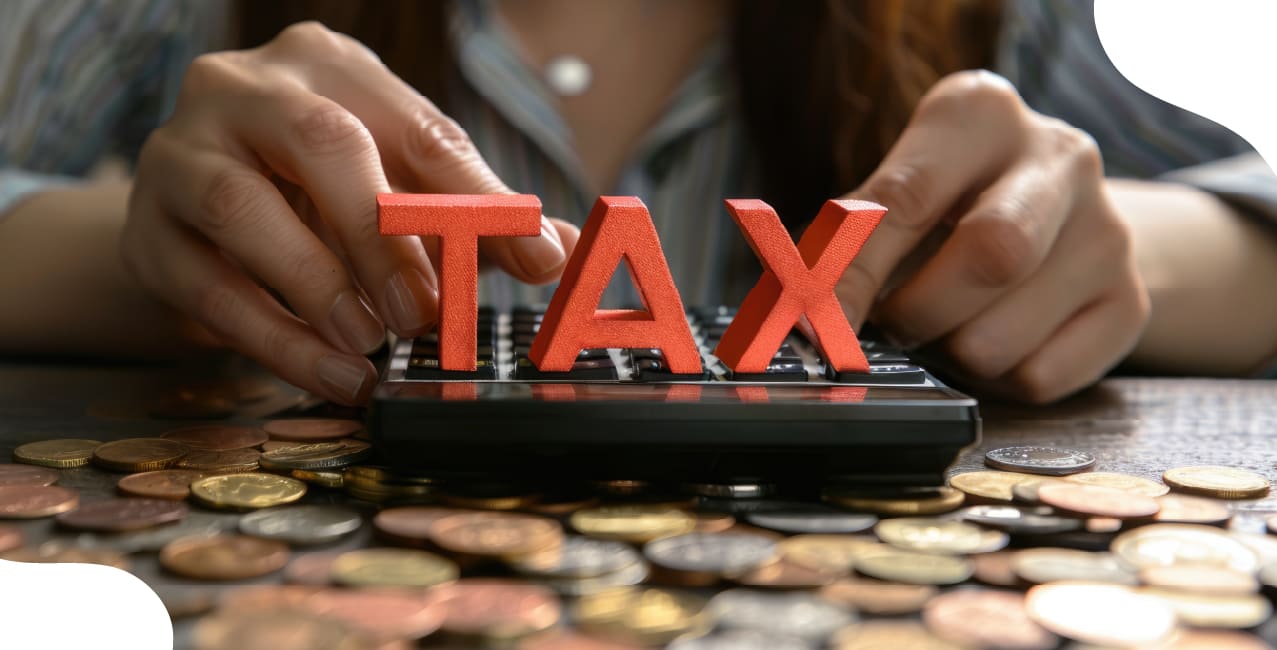
Author
LoansJagat Team
Read Time
6 Min
07 Aug 2025
What is IGST? Meaning, Difference from CGST & SGST Explained
IGST stands for Integrated Goods and Services Tax. It is charged by the central government. IGST also applies to imports and is later shared with the consumer’s state.
‘Tum commodity ke peeche, government tax ke… too much fun!’
Not everything you want is available in your state. If you live in Punjab, you can’t buy authentic Rava Laddoos of Kerala there? Now can you? So, you decide to ship them from Kerala to your place. The price for these laddoos is ₹2000/kg. However, when Jaspreet ordered from Punjab, he had to pay ₹2240/kg.
Now, the question is why he was charged ₹240/kg extra? This is because of the applicability of IGST on that commodity. ‘IGST… naam mein pehchan nahi!’ So, here is the breakdown for the above example: ₹2,000 + 12% IGST = ₹2,240
Many of us don’t even know what IGST is. So, through this blog, let’s expand our knowledge and see why Jaspreet paid ₹240 extra for every kg.
What is IGST?
IGST is the tax levied by the Central Government on all inter-state supplies of goods and services in India. That means if you are buying a commodity from another state than your own, then you have to pay IGST. It also applies to imports into and exports out of India.
You will be surprised to know that the gross GST revenue collected for July 2025 totalled ₹1,95,735 crore. This was a 7.5% increase from the ₹1,82,075 crore collected in July 2024.
When Does IGST Apply?
‘Kashmir tu main Kanyakumari!’
IGST is applicable when the transaction gets a little... long-distance. Here’s when it shows up:
- Selling Between States = IGST Time
If a seller in Maharashtra ships something to a buyer in Tamil Nadu, IGST is charged. Just like in the case of Jaspreet’s Rava Laddoos. It is like the “interstate toll tax” in the GST system.
- Imports = IGST at Customs
Ordering Italian cheese online? The moment it enters India, IGST is added at customs. ‘Cheese ka swaad sirf tum nahi, tumhara wallet bhi lega!’
- Exports = Zero Rate under GST
If you are sending goods abroad to your daughter or son studying there, you have a leeway. You have the option to pay IGST on exports and then claim a refund of the same. Exports are zero-rated, so it’s a win-win.
- SEZ Transactions = IGST Applies
Selling to or from a Special Economic Zone (SEZ) is treated as inter-state. So, in such cases, always remember to pay IGST.
CGST and SGST
Till now, we have learnt how India’s GST works. The tax is split depending entirely on where the buyer and seller are located. If the sale happens within the same state, the tax gets split into two halves: CGST (Central Goods and Services Tax) and SGST (State Goods and Services Tax).
But if the transaction involves two different states, like Maharashtra selling to Gujarat, then IGST (Integrated Goods and Services Tax) takes over.
Read More – What is GST? Meaning, Structure & How It Works in India
What is CGST?
CGST stands for Central Goods and Services Tax. It applies whenever the seller and buyer are both located in the same state or Union Territory. The purpose of CGST is to ensure that the Central Government gets its share of tax from such transactions.
The rate of CGST (Central Goods and Services Tax) is usually half of the total GST rate. So, if a product attracts 18% GST, then 9% goes as CGST. This tax is collected by the Central Government, and businesses are required to deposit it through the official GST portal.
For example, Anita buys a dining table worth ₹20,000 from a furniture store in Bengaluru (both buyer and seller are in Karnataka). The GST rate on furniture is 18%.
So,
- CGST = 9%
= ₹20,000 × 9% = ₹1,800.
This ₹1,800 is paid to the Central Government.
What is SGST?
SGST, or State Goods and Services Tax, applies alongside CGST in intra-state transactions. While CGST is credited to the Centre, SGST is credited to the State Government of the consumer’s location. Like CGST, SGST also takes up half of the total GST rate.
Using the same example of Anita’s ₹20,000 dining table purchase,
- SGST = 9%, = ₹20,000 × 9% = ₹1,800
This ₹1,800 will go to the Karnataka Government.
- The Total Tax = ₹1,800 (CGST) + ₹1,800 (SGST) = ₹3,600.
The final price Anita pays is ₹23,600.
CGST & SGST vs IGST
Now, let’s just say that instead of Bengaluru, Anita purchases the dining table from Delhi at the same price, ₹20,000. So, in this case, 18% IGST will be applied. It will be collected by the central government and later shared with the destination (consumer’s) state, that is, Delhi.
So,
- IGST = 18% = ₹20,000 × 18%
= ₹3,600
- Total Price Paid = ₹23,600
The final price paid under IGST is the same as the total price paid under CGST and SGST.
Also Read -Objectives of GST: Why Was GST Introduced in India?
Let’s summarise CGST & SGST, and IGST with the help of the table given below:
In the case of IGST, the Centre collects the entire tax amount first. It then settles with the consuming (destination) state based on where the goods or services are finally delivered. This settlement happens through a process called apportionment, which is facilitated by the GSTN (GST Network).
Input Tax Credit (ITC) Flow
In the GST system, businesses can use Input Tax Credit (ITC) to reduce the tax they pay on sales. They do this by adjusting the tax already paid on purchases. But how you use ITC depends on the type of tax: IGST, CGST, or SGST, and each has its own set of rules.
IGST Credit Usage
Credit from IGST (Integrated GST) is the most flexible and can be used in the following order:
- First, it must be used to pay any IGST liability.
- If any credit remains, it can then be used to pay CGST.
- Finally, if there’s still some left, it can be used for SGST.
For example, a business has an IGST credit of ₹1,300. It needs to pay ₹1,000 as IGST, ₹300 as CGST, or ₹300 as SGST.
- The IGST credit will first be used to pay the full IGST liability of ₹1,000.
- The remaining ₹300 can then be used for CGST or SGST.
CGST and SGST Credit Usage
Credits from CGST (Central GST) and SGST (State GST) are more restricted in their use:
- CGST credit can be used first to pay CGST liability. If any remains, it can be used to pay IGST. However, CGST credit cannot be used to pay SGST.
- SGST credit must be used first for SGST liability and then, if any remains, to pay IGST. SGST credit cannot be used to pay CGST.
For example, a business has ₹500 in CGST credit. It can use ₹300 to pay CGST and the remaining ₹200 for IGST. However, CGST credit cannot be used to pay SGST liability. So the business would still need to pay SGST separately from its own funds or available SGST credit.
This strict separation between CGST and SGST ensures that the Centre and State governments receive their fair share. It also prevents cross-crediting between central and state taxes.
Summary of Credit Flow
These rules are governed by Section 49A and Rule 88A of the CGST Act. These are widely followed by accounting platforms like Tally, which help ensure compliance for businesses. Misusing credit across the wrong tax types can result in penalties or rejected filings during audits.
Conclusion
IGST makes interstate trade smoother by replacing separate central and state taxes. It ensures fair revenue sharing between the Centre and the states. Just by understanding how IGST works, businesses and buyers can avoid confusion, claim input credit, and stay GST-compliant. ‘Sarkar ke sath chalo, nahi to Income Tax Department ke saath chalna padega!’
Frequently Asked Questions
How does GST apply to online marketplaces like Amazon or Flipkart?
E-commerce platforms must charge IGST if the seller and buyer are in different states, and CGST+SGST if they’re in the same state.
Do SEZ developers pay GST when purchasing goods or services?
Purchases made by SEZ units are treated as zero-rated, so suppliers charge 0% IGST but can claim input tax credit.
What happens if IGST is wrongly paid instead of CGST and SGST?
The taxpayer must reverse the incorrect payment and re-file using the correct tax heads. Refunds must be applied for separately.
Is there a time limit for claiming IGST input tax credit?
If the supplier has paid tax on the supply, you can claim ITC within 12 months from the supply date. But if tax hasn’t been paid, you have up to 36 months to claim it.
What is the role of the GST Council in IGST rate changes?
The GST Council recommends changes in IGST rates. However, the final notification is issued by the Central Government.
Other GST Important Pages | |||
About the Author

LoansJagat Team
‘Simplify Finance for Everyone.’ This is the common goal of our team, as we try to explain any topic with relatable examples. From personal to business finance, managing EMIs to becoming debt-free, we do extensive research on each and every parameter, so you don’t have to. Scroll up and have a look at what 15+ years of experience in the BFSI sector looks like.

Quick Apply Loan
Subscribe Now
Related Blog Post

LoansJagat Team • 22 Sep 2025
_of_Income_Tax_Act.jpg)
LoansJagat Team • 22 Sep 2025

LoansJagat Team • 22 Sep 2025